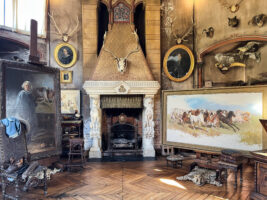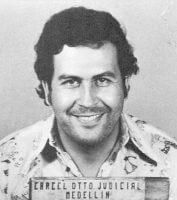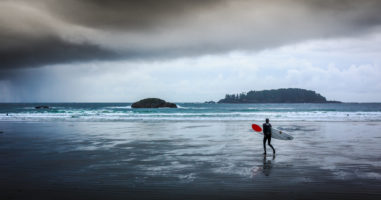The land I stand on has claimed many lives.
Almost 8,000 feet up in California’s High Sierras, the air is so cold and brittle it feels like I could crack it with my teeth. Alpine forest skitters up sharp mountains to my right, and a yawning, scrubby, desert spills out to my left. I imagine what it must have been like to discover this place. For the first indigenous Mono tribes, and the European settlers who followed much later, exploring this land must have felt strange and terrifying: Frequent earthquakes, boiling creeks, and geysers of scalding mud, all without a geologist to explain them. A world where the very ground bucks beneath one’s feet. It’s a place that offers answers — at a price.
In the late 1800s, when the first European settlers traveled through here, they dubbed this region “The Devil’s Land.”
~~
I, like many people, have lived my life under the tacit assumption that the world is an inert object that I just so happened to be born on. A ball of rock suspended in the cosmos. Sure, I’ve learned about the fundamental theories and forces that shape the land, but they all exist so abstractly.
There is a canyon behind my mom’s house. I know in an academic sense that it has been gouged out, over thousands and thousands of years, by the small creek running through its middle, but after 20 years it doesn’t look any deeper than when I was a kid. Significant geologic events usually happen over a prolonged timeline: one that I occupy an infinitesimally small cross-section of. It appears like nothing is happening.
But that is an illusion.
~~
At 83 years old, Harry R. Truman damn sure wasn’t going to leave.
It tore through everything in its path, pulverizing trees, lifting boulders the size of well-fed cattle hundreds of feet in the air…
Truman was the owner and caretaker of Mount St. Helens Lodge at Spirit Lake in Washington state. The lodge, as you might have guessed, was situated near the base of Mount St. Helens, perhaps the most famous modern-day volcano in the continental United States. In the months leading up to its historic 1980 eruption, during mass evacuations, Truman steadfastly refused to leave. He told authorities the mountain was his home, he’d lived in its shadow all his life. His words became galvanized in local history — “If the mountain goes, I’m going with it.”
When St. Helens erupted, a wall of superheated ash and debris, known as a pyroclastic flow, came screaming down its slopes. It tore through everything in its path, pulverizing trees, lifting boulders the size of well-fed cattle hundreds of feet in the air, and wiping places like the Mount St. Helens Lodge at Spirit Lake, along with its faithful caretaker, off the map. Those that were close to Truman have gone on record to say they doubt he had much regret for how he chose to go.
At the same time that Truman was taking his stand, a group of students from a nearby university were piling into pick-up trucks and driving out to the mountain’s red-zone, where scientists for the United States Geologic Survey (USGS) — in conjunction with local authorities — had blocked off the roads. The students followed one road as far as it would take them and then forged on by foot through the trees, until they found a suitable view of the peak and surrounding commotion. They brought coolers of crisp, American beer to enjoy as they watched the earth upend itself.
They were children, playing at the feet of a slumbering titan.
~~
Robert Joki [pronounced yo-key], current president of the Southern Mono Historical Society, crouches on an old wooden chair in the front room of the Twin Lakes Gallery he and his wife, Sue, have been running since 2013. Before moving here, just outside the town of Mammoth Lakes, CA, he ran an art gallery in Portland, Oregon. And before that he piled into pick-up trucks with college friends to galivant at the base of a certain volcano.
Situated on federal land, nestled among Jeffery pines and glacier-cut cliffs, the cabin housing the gallery is almost a century old. The interior is heated by an iron wood-burning stove, the furniture is worn and comfortable, and the walls are adorned in paintings, old photographs, and mining equipment. Joki is a towering man, kindred to the pine trees, with a bushy grey ponytail, small circle-rimmed glasses, and a beaming, crooked grin.
I ask Joki what he thinks of Harry R. Truman’s attitude.
“I think of myself in kind of the same way. Here I am, decades later, in Mammoth Lakes on top of another volcano,” he says, his smile unwavering. “If it takes me, it’s gonna take me.”
~~
Mammoth Lakes is a quintessential mountain town. Its main street is peppered with cozy coffee-shops, craft-breweries, and outdoor outfitters. Its quaintness is offset slightly by its utilitarian buildings — folks here live through snowfall of up to 20 feet each winter — and there is an austerity to its metal A-frame roofs and sun-bleached walls.
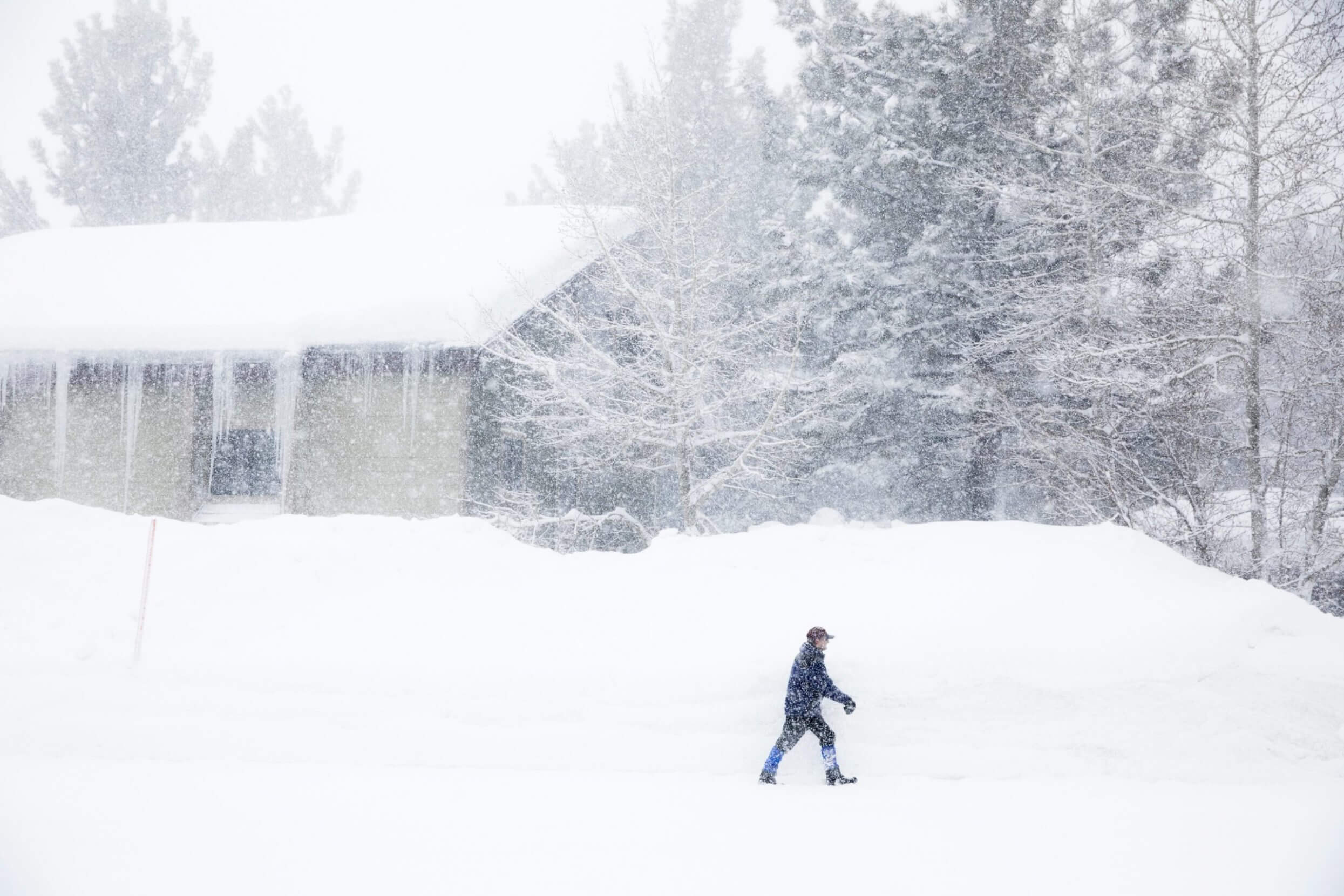
A figure walks through the deep snow in Mammoth Lakes, California—a beautiful, but challenging place to live PHOTO: CAVAN IMAGES/ALAMY
Situated on the California side of the south-eastern Sierra Nevada mountain range, Mammoth Lakes is a playground for outdoor enthusiasts: It has sweeping high-desert, daunting peaks, ski resorts, hot springs, and a chain of crystalline lakes formed by glaciers for which the town earned its namesake. Snow falls as crisp powder. Trails loop in and out of the mountains, with each valley and pass promising seclusion and adventure. Stars are so bright and numerous, it feels as though the sky is pressing against your face.
In “The Devil’s Land,” however, there is more to this stupefying beauty than winter-sports and hiking. In some areas, steam shoots from holes along trails. In others, it floats in ghostly wisps out of loosely packed dirt. Beneath the boots of the backpackers is a sea of molten rock. It’s pressing up against the ground beneath Mammoth Lakes.
The desert basin is not simply a valley, but a crater, a smoldering cauldron.
~~
About 760,000 years ago, a volcano in the High Sierras erupted and blew roughly 150 cubic miles of molten rock from four miles underground into the air. The resulting crater was filled more than half a mile-deep with ash to form the depression we now refer to as the Long Valley Caldera — the valley upon which Mammoth Lakes sits. It is one of only three “super volcanoes” in the continental United States: The others, the Yellowstone Caldera in Montana and the Valles Caldera in New Mexico, are still active.
Walking around the Long Valley’s sage-brush hewn basin, surrounded on all sides by the the jagged Sierras’ distant peaks, it is difficult to imagine the magnitude of a blast like that: One that could cut a 10-by-20 square-mile valley in the high mountains of California and spread ash as far as modern-day Nebraska, which is 1,200 miles, or 20 hours of continuous driving, away. I can’t help but feel minuscule by comparison.
It may do us all some good to go to places with real stakes on the line.
The caldera is part of a much larger volcanic chain running up the Sierra Nevada. While there aren’t lava-flows or glowing pits in the area, the chain reminds residents of its presence by means of gas, hot springs, steam, and persistent seismic activity. In 1980, a 6.0-magnitude earthquake kicked off a period of unrest for the valley that continues to this day, although members of the USGS are quick to note that for a volcano of this size, an eruption could still be centuries, if not millennia, away. It must be strange though, to live or take a vacation above a ticking time-bomb. Among the fossilized remnants of such a destructive force, feeling the earth murmur about the possibility of its return, time begins to dilate, folding a history that existed far before human civilization and the present moment into a single space.
~~
Beneath my feet is a dead cinder-cone — a volcano that forms from the emergence of a hot spot spitting out chunks of blazing rock until it builds what is essentially a giant pile of boulders. Obsidian Dome is composed of white pumice and pieces of obsidian the size of SUVs, and even for someone like me who has studied the process behind its birth, it’s surreal. The word moonscape is fitting. Hellscape, too. Gazing into the distance, I see other barren cones peppering the landscape. Pale alien structures, in a sea of trees, bulging up from the earth.
~~
Mike Sorey is in his early 70s and wears a lifetime of working as a field scientist on his skin. His face is creased by exposure to wind, sun, and — if the lines fanning out from his eyes are any indication — joy. The fingers on his right hand are ground down to the topmost knuckle from frostbite. Sorey was working as a hydrologist for the USGS in 1989 when, after an earthquake swarm (a cluster of seismic events), groups of trees began erratically dying around Mammoth Lakes. At first, he was tasked with sussing out what kind of beetle was causing such widespread destruction in the forest. His team was stumped because, as he tells it, “we were finding dead birds and squirrels in the trees as well.” They quickly discovered the culprit leaking from the ground.
In high concentrations, CO2 is a lethal gas. When inhaled, it brings about unconsciousness within seconds, followed quickly by asphyxiation and death. Sorey and his fellow geologists discovered that a magma intrusion beneath the ground had created a reservoir of almost pure CO2 that was moving up through small fault-lines and ventilating on the surface out of what are known as fumaroles. It wasn’t a problem that could be remedied.
~~
In the winter of 1998, 10 feet of snow had fallen on Horseshoe Lake, the highest body of water among the Mammoth Lakes chain. A cross-country skier passing through the area fell into a deep snow-well that had formed beneath the roof of a small building. Because CO2 is heavier than air, it had saturated the freshly fallen powder. The skier’s body was found two days later, dead from asphyxiation, his skis still strapped to his feet.
Sorey recalls a time in 2006 when three ski patrols met a similar fate while trying to cordon off a fumarole on the ski-side of Mammoth Mountain. He speaks with clinical affectation about the event, as the scientist in him prevents editorializing the facts, but there is a noticeable tone of remorse in his voice. “They started falling through the snow headfirst,” he says. “They would hit their heads 10 feet down and breathe in the CO2 and die.”
While walking along the rim of Horseshoe Lake, I watch a group of children near the water drag dead pieces of wood through an inch of fresh snow. Part of me mourns the people who have died here, but another more detached voice says it may do us all some good to go to places with real stakes on the line. Places that force us to pay attention to, and respect our surroundings.
~~
Hot Creek runs through the brushland of the Long Valley Caldera. The most popular place for tourists is a section of the creek at the bottom of a shallow ravine with steaming pools of unnaturally blue water. The sulfur here gives the air a smell of putrid eggs and freshly lit matches, and on a chilly day visible plumes of steam unravel from the ground.
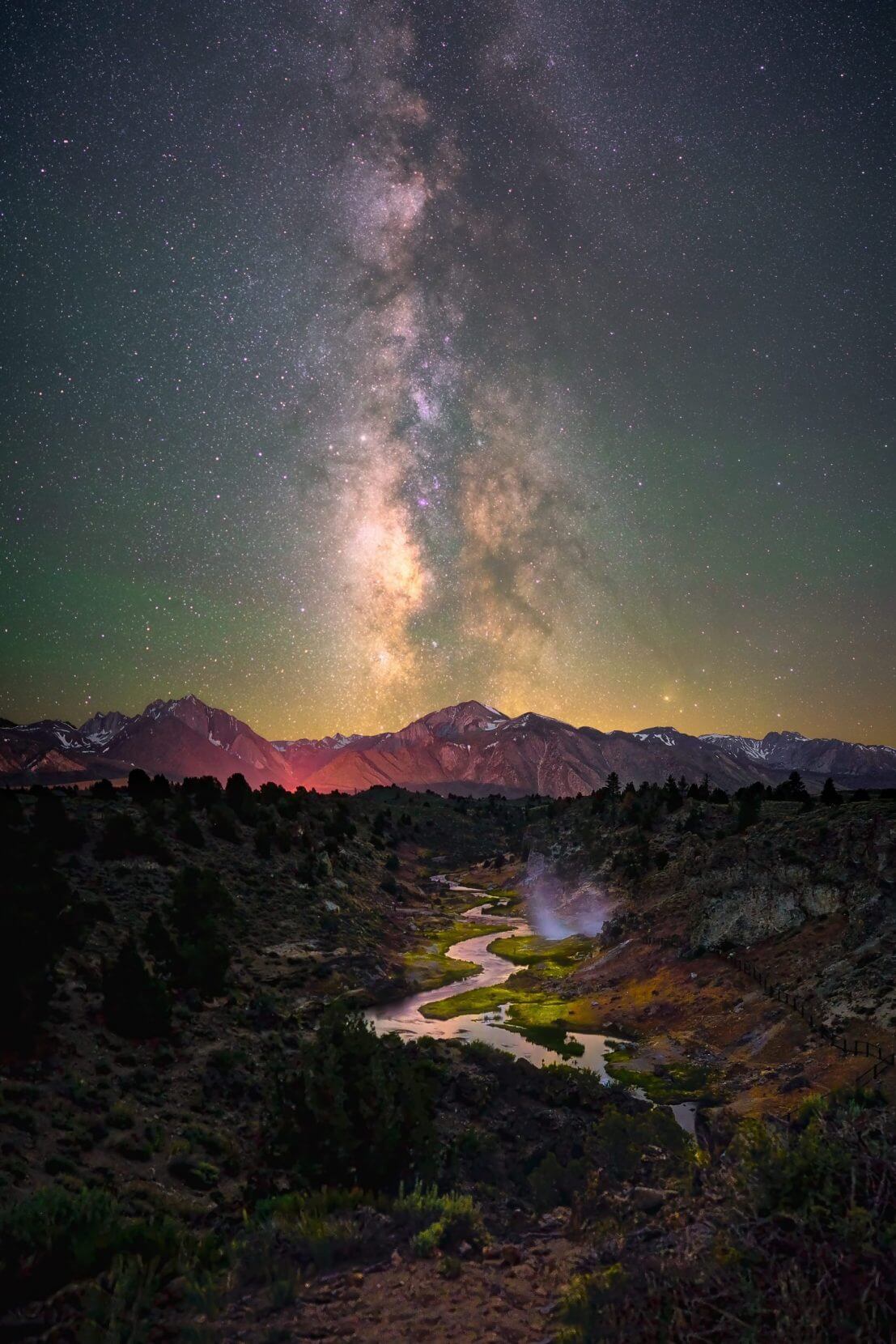
There are only a handful of places on Earth like Hot Creek’s active geologic setting in California. Like most geothermal springs, the area is constantly changing and evolving. Earthquakes can cause sudden geyser eruptions and overnight appearances of new hot springs at Hot Creek, making the area unsafe for swimming. PHOTO: RAJESH JYOTHISWARAN
Since the early 2000s, there has been geysering activity at and surrounding the site, sometimes so aggressive that it produces a popping sound that is audible from over 100 feet away. Sections of the creek can be brought to boiling temperatures by superheated water being pushed up from miles underground, reaching up to 430 degrees Fahrenheit. The force of the water rising from the ground has the unfortunate effect of suspending any object directly above the boiling jet-stream like a crab in a pot — including those who have fallen, or mistakenly swam, into its path.
There have been a total of 14 deaths at Hot Creek over the years. As a result, the park service has banned swimming and nighttime visitation. But while taking pictures of the springs, I watched a group of tourists pass the warning signs, hop the chain barriers, and approach the river. I told them they might get fined if someone caught them, but I should’ve led with the fact that they could die.
One of the tourists, a man with a pinched face and small rimless glasses, turned around and said, “I know.”
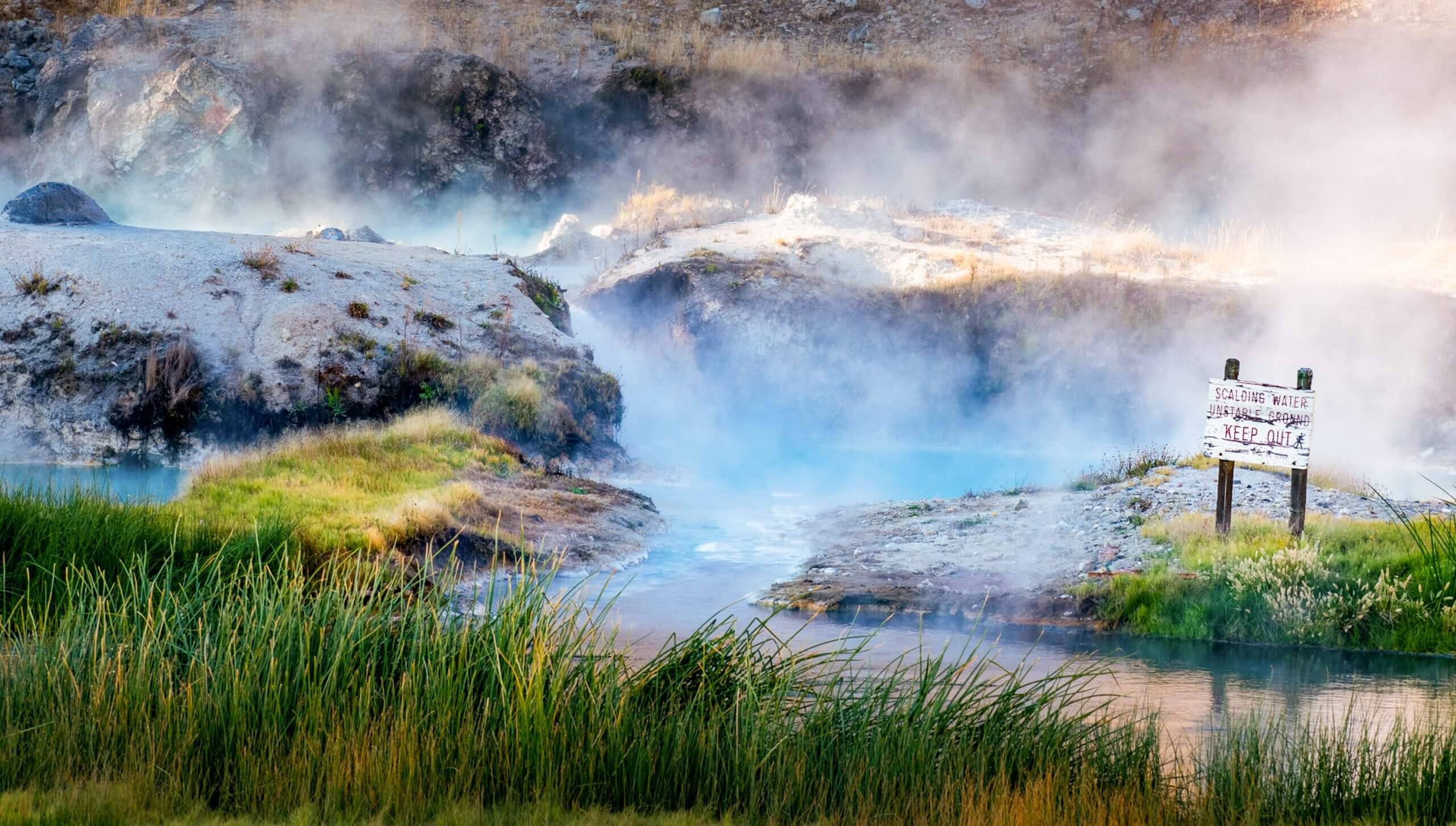
Although the warm waters seem tempting, swimming is illegal at this location due to the rapid fluctuation of water temperatures, as changes of 200 degrees F (93 Celsius) over mere seconds have been recorded within the stream. PHOTO: JORDAN RANFT
~~
There is nothing static about our planet. We can watch islands being formed, sheet by glowing sheet of liquid stone in the Pacific; we can peer over the rims of craters and see roiling lakes of lava that have been dredged from the reaches below; we can understand that, by means of pressure and shifting rock, we are standing on top of forces with the potential to erupt violently, ripping us and everything within a couple hundred miles off the face of the planet.
If you ask me, acknowledging this greater power is a better way to live. Here I stand, on an entity larger than my ability to comprehend, as it shifts and twitches and occasionally explodes. It’s not accurate in a scientific sense, but the Earth feels alive. It feels arbitrary, and mysterious. Even after centuries of geological research, we are still at its mercy — we are all still children, playing at the feet of slumbering titans.
It’s 17 degrees Fahrenheit, and I am bathing in the sulfur-tinged belly of the “Devil’s Land.” Out in the flat, high desert of the Caldera, I soak in the Wild Willies hot springs, a place, as Robert Joki puts it, “where the earth is being born … four inches from my face.”
I look up at the sky, the Milky Way splashed from end-to-end. I am held between a dynamic earth, so very large that it is indifferent to me, and all the rest of space, equally uninterested. The small span of my lifetime presses against a seemingly endless history. I feel terrified and strangely comforted. I have the urge to live as vigorously as possible. To do it all while I can.
Because when the mountain finally goes — I’m going with it.
Jordan Ranft
Jordan Ranft is a writer and behavioral healthcare worker from the Bay Area. He enjoys writing about arts, culture, the environment, and the strange and oftentimes unnerving intersection between societal artifice and the natural world.
Never miss a story
Subscribe for new issue alerts.
By submitting this form, you consent to receive updates from Hidden Compass regarding new issues and other ongoing promotions such as workshop opportunities. Please refer to our Privacy Policy for more information.

